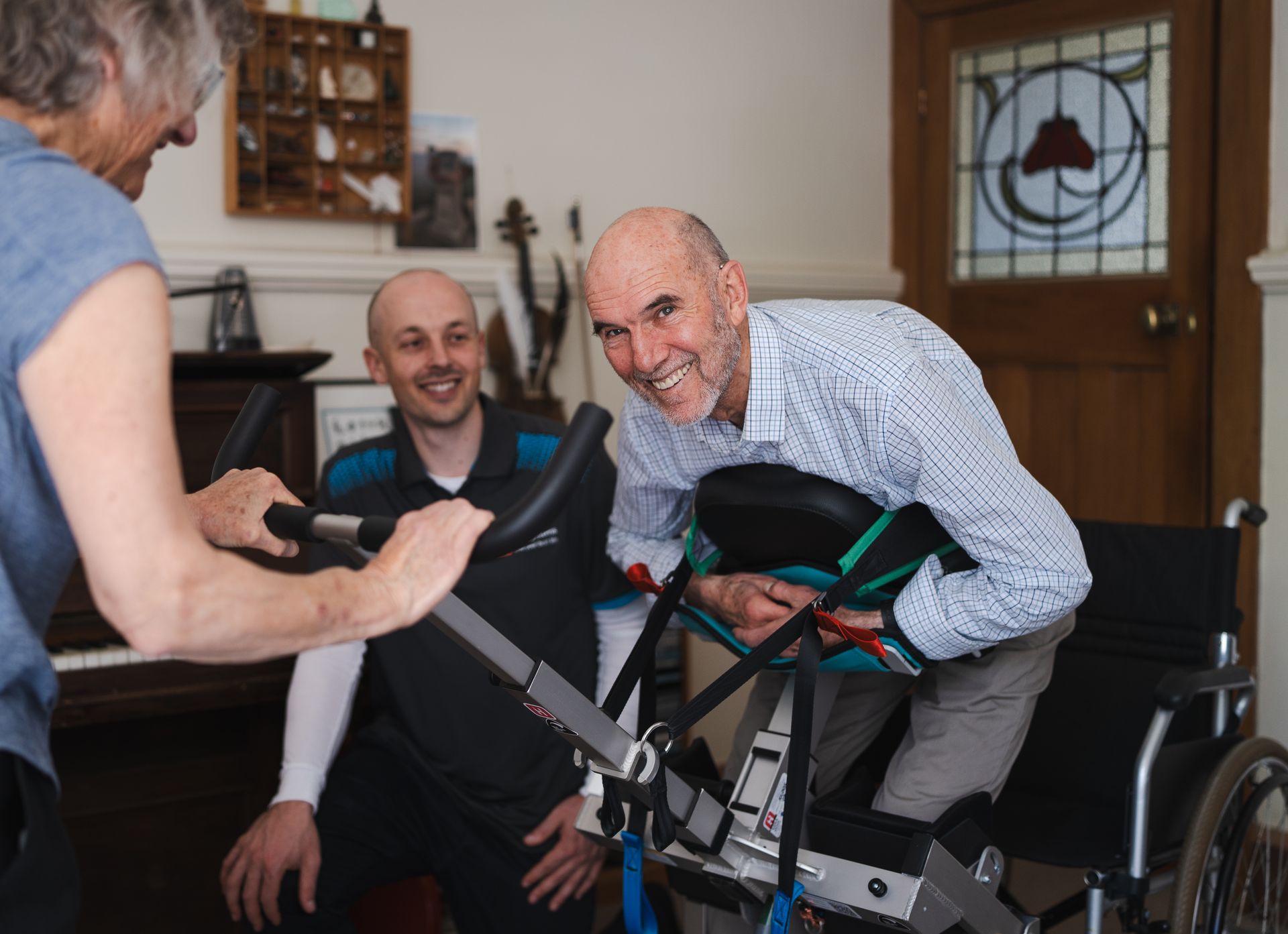When people talk about transfer technology, the term “sit-to-stand” comes up a lot. But what happens when standing just isn’t safe anymore?
For caregivers supporting someone at home with high needs – and for the people being cared for – traditional methods often stop working long before the system is ready to admit it. That’s why we designed something different.
Let’s break it down.
What is sit-to-stand?
Sit-to-stand is the name of a hoist-based transfer method designed for people who can participate actively in a move from one seat to another – usually someone with reasonable leg strength, balance, and blood pressure control.
Here’s how it works:
- A sling is placed behind the person’s back
- A mechanical arm helps lift them into a semi-standing position
- They’re then pivoted or moved to another seat
It’s commonly used in aged care and rehabilitation because of the potential benefits:
- Promotes weight bearing
- Often only requires one caregiver
Sit-to-stand is a great option for people with standing ability, and it’s generally quick and convenient. But for some conditions, that window is narrow. And outside of it? Sit-to-stand can become frustrating, risky, and even harmful.
When Sit-to-stand doesn’t work
For many people with progressive conditions or long-term disabilities, doesn’t work for people who:
- Can't actively participate in the lift
- Can’t weight bear
- Don’t have good upper body strength
For these people, the sling can ride up under the armpits and be painful. At this point, a sit-to-stand becomes unsafe – even with two caregivers.
Introducing sit-to-sit - a safer alternative
That’s where sit-to-sit comes in – a safer, smarter alternative created by HT Systems for people with no standing ability at all.
Instead of relying on legs or upper body strength, sit-to-sit uses:
- A backstrap and chestpad combination to lift the user with a secure hug
- A patented lever system powered by the caregiver – not electricity
- A fixed position movement that keeps the person's hips in the same position during the full transfer
It was designed from the ground up for real families caring at home, where the priorities aren’t just mobility and safety – but also dignity, speed, and the ability to transfer with just one person.
The user is lifted securely between a chest pad and backstrap – a soft, safe “hug” – with no need to bear weight or even touch the handles. In fact, the user’s feet can be slightly lifted if they’re completely non-weight-bearing.
Sit-to-sit is for:
- Tetraplegics / quadriplegics
- High spinal cord injuries/impairments
- Neurological conditions and brain injuries
- Users with no weight-bearing ability
- Users with no sitting or standing balance
- Users with limited or no arm function
- Anyone living in a small space with one available caregiver
Sit-to-sit vs sit-to-stand – at a glance
Feature | Sit-to-stand | Sit-to-sit |
Requires no weight bearing? | ❌ No | ✅ Yes |
Requires no arm strength? | ❌ No | ✅ Yes |
Battery-free operation? | ❌ No | ✅ Yes |
Enables single-caregiver transfer? | ✅ Sometimes | ✅ Always |
Suitable for severe disability or full paralysis? | ❌ No | ✅ Yes |
Travel-friendly design? | ❌ No | ✅ Yes (Kera Travel) |
Quick to use? | ✅ Sometimes | ✅ Yes |
Built for real homes
- Powered manually by the caregiver — no need to charge batteries
- Compact frame fits into tight domestic spaces
- Large castors for easy maneuvering
- Add-on accessories to suit different body types and children
- No power = works even during outages or civil emergencies
- Designed for daily use by real people — not just facilities
The bigger picture
In New Zealand, four caregivers are injured every day doing manual transfers.
That’s four too many.
We built Kera Home and Kera Travel not just to make transfers easier – but to give caregivers their lives back. These tools are about helping people stay home and stay safe – without needing full-time help or risking caregiver injury.
Is HT Systems the only one doing sit-to-sit?
Right now – yes.
We invented this approach because nothing else worked. And we’re continuing to evolve it in partnership with the people who use it: caregivers, clinicians, and users with lived experience.
Final thought
Sit-to-stand has its place. But for many, that window of ability has already closed. And until now, the options just haven’t kept up.
If you're tired of workarounds, burnt out on hoists, or just looking for a smarter solution – sit-to-sit might be exactly what you’ve been waiting for.
Want to see how it works?
👉 Watch the Kera sit2sit in action
👉 Contact us for a demo or quote
Sign up and get a free Kera Demo Video!
